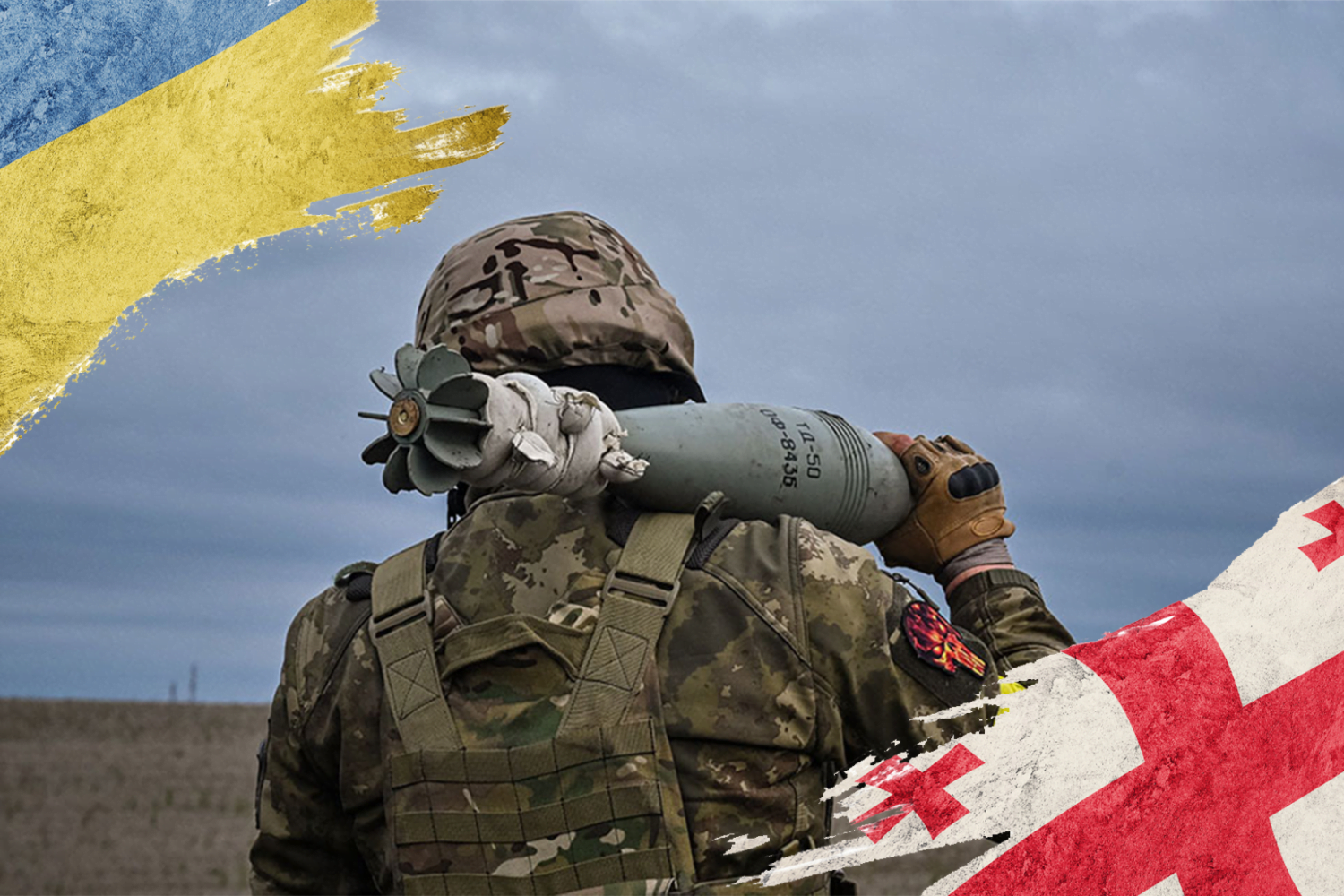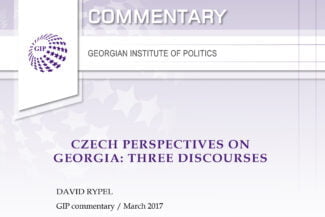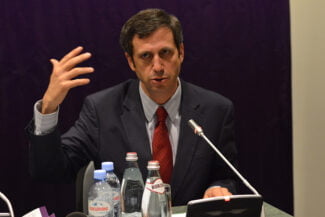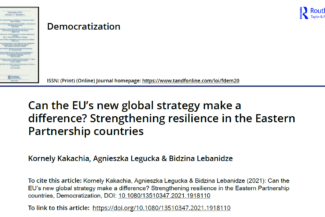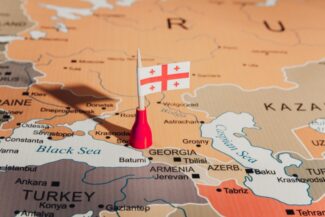In March of 2022, just a couple of weeks after Russia launched the full-scale military aggression against Ukraine, GIP proposed four possible scenarios of future developments and their possible implications for Georgia. Unlike the expectations in the West, Ukraine has managed to resist military aggression and successfully recapture some of the territories lost during the war’s early phase. . However, almost one year since the invasion, the conflict seems to be reaching its decisive point. According to various sources, as the war is reaching its first anniversary, the Kremlin is preparing for a major offensive that might reach the scale Europe has not witnessed since World War II.
As the war continues reshaping global geopolitics, the following piece will revisit GIP’s previous assessments and offer insights into what has changed over the last 11 months since its publication. Although the war is far from over and significant battles are still ahead, five scenarios discussed in detail below offer some insights into the dilemmas and potential risks that Georgia may face considering different possible developments in Ukraine.
Scenario 1: Ukraine wins the war (Probable)
As western support for Ukraine continues to increase, leading to a successful counteroffensive operation, and eventual victory, the geopolitical paradigm in the wider Black Sea region would change drastically. As was expected in our scenario 1 from March 2022, Western European countries have been step-by-step reconsidering their previous cautious approach towards supplying heavy arms to Kyiv. If the situation is going to develop in this direction and Ukraine is going to achieve full de-occupation of its territories (including the Crimean Peninsula), it’s not excluded that the window of opportunity may appear for NATO’s further enlargement to the East. This would mean Ukraine, already viewed as a de facto member of the alliance, could get the fast-track membership, possibly with Moldova. In the best-case scenario, this would also imply Georgia joining the alliance. In addition to NATO enlargement, Russia’s defeat and retreat from the region will also make Georgia’s European integration irreversible. The increased presence of the European Union in the region and the Associated Trio’s close anchoring to Euro-Atlantic structures might also positively impact the prospect of a peaceful resolution of the question of Georgia’s territorial integrity.
However, in this scenario, Georgia might face certain risks, and policymakers in Tbilisi need to be aware of those. Due to soured relations between the current Ukrainian and Georgian governments and some controversial statements from the latter’s ruling party, the risk arises that Georgia’s gradual departure from the Western geopolitical radars may continue. This creates a potential risk for Tbilisi to be left behind, similar to what happened with the EU’s candidate status last year.
This scenario implies risks for Georgia from another perspective as well. Defeat in Ukraine may result in regime change in Russia, leading to internal instabilities and power struggles. This could lead to a spillover of chaos in the already volatile North Caucasus, creating a range of challenges on the border of Georgia. In other words, while a strong Russia is a serious threat to Georgia, an unstable Northern neighbor is no less dangerous for its security.
Risks will increase for Georgia even if the Russian regime survives defeat in Ukraine. Since it can still act as a spoiler, the Kremlin might be keen to restore its tarnished prestige by continuing adventurous foreign policy towards Georgia which may result in deteriorating Georgia’s precarious security situation.
Scenario 2: Freezing the conflict and/or returning to status quo ante (Possible)
As the war drags on causing an immense number of causalities on both sides, there is a possibility that both Russia and Ukraine could reach the point of exhaustion. Especially, if the intensification of battles in the next couple of weeks does not yield any substantial breakthrough. In the media, there were reports later refuted by Russian officials about the CIA director allegedly offering a secret peace proposal to Kremlin, offering 20% of Ukraine’s territory. Meanwhile, polls also show that the gap between Republican and Democratic voters over the support for Ukraine is growing.
Thus, decreasing enthusiasm in the Western capitals and the immense toll Ukrainians paid, might push warring parties towards temporarily ceasing large-scale hostilities. This would be either freezing the conflict or returning to the status quo in the Eastern part of Ukraine. This will give Kyiv the opportunity to focus on rebuilding the infrastructure, restoring the economy, and building close relations with the EU and NATO. However, the existence conflicts with frozen solutions will also allow Russia to restore its forces and prepare for a new assault. This scenario also implies a risk for Georgia, as preparing for a new offensive would intensify the ongoing “silent” mobilization. This, in its turn, may lead to an increase in Russian migrants to Georgia. Considering Kazakhstan has already toughened its visa regime for Russians, the pressure on Georgia as the destination for the transit or the shelter is going to increase.
Moreover, with conflict intensity decreased in Eastern Ukraine, Russian Federation could apply pressure on Georgia through South Ossetia and Abkhazia. As in the first scenario, amid the upcoming presidential elections in 2024, Putin might need a quick victory on the foreign front to compensate for the damage caused by the failures in Ukraine. In the worst-case scenario, officials in Tbilisi might be forced to give up its policy of Euro-Atlantic integration and align its external policies with the Kremlin’s.
Conversely, freezing the conflict might also lead to the new reset policy that would allow the West to slowly restore economic relations with Russia, leaving Georgia on its own. Even more, considering a pity state of democratic consolidation in the EaP countries, it might revert the current geopolitics-driven enthusiasm towards the EU enlargement and increase skepticism among Western European states.
Scenario 3: The Kremlin achieves its strategic goals (Unlikely)
In this scenario, Russia achieves a successful breakthrough in the upcoming major battles. With Western support decreasing, Ukrainian resources exhausting, and a raising death toll among civilians, Ukraine might be forced to concede. Ukraine’s concession would imply the change of the government in Kyiv, recognition of occupied territories as part of Russia and the end of Euro-Atlantic presence in the region for decades to come.
As it was outlined in our scenario 2: Georgian nightmare published in March 2022, there is no doubt that in case of such developments, the Kremlin may pose an ultimatum to Tbilisi or may even establish a puppet regime in Tbilisi. Georgia could be dragged into the Commonwealth of Independent States (CIS) or even into the Eurasian Economic Union (EEU) and the Collective Security Treaty Organization (CSTO). Georgia’s pivot towards Russian sphere of influence could also imply the Kremlin getting the influence over the Trans-Caspian International Transport Route aka the Middle Corridor. This would mean for Georgia losing its strategic importance for the West and the South Caucasus would become Russia’s backyard.
The risk of armed resistance from Georgia remains in this scenario. It would largely depend on whether the Russian demands to Georgia would include an ultimatum to formally recognize the Russian-occupied territories.
This scenario also implies major social unrest and instabilities for Georgia. Most Georgians, especially the youth, pro-democracy civil society, and media, would likely be unwilling to live under a Russian-style authoritarian system. Therefore, backlashes, repressions and authoritarian rule are to be expected, to suppress the opposition. The country will be hit by massive emigration and brain drain.
Scenario 4: NATO-Russia Full-Scale War (Highly unlikely)
Out of all the possible scenarios outline here, this seems to be the least likely, yet still a possibility. Especially if, after a successful counteroffensive in the East, Ukraine will start military operations to free the Crimean Peninsula. Attacks on Crimea or deeper territories in Russia might further escalate the conflict and lead to the Kremlin using a tactical nuclear weapon. According to some experts, even the case of NATO supplied missiles penetrating and hitting a target deep into Russian territory, especially into urban residential areas, might lead to the Kremlin authorizing a nuclear strike on Ukraine. Consequently, that would increase the potential of escalation into a full-scale military conflict between NATO member states and Russia. Putin’s close ally, Ramzan Kadyrov, has already threated Poland, while the Russian embassy in the UK issued the warning that supplying jets to Ukraine would have “military and political consequences for the European continent and the entire world”.
In case of a war between Russia and NATO member states, the Black Sea region gains strategic importance. It includes Bulgaria, Romania, and Turkey, members of the alliance and most likely get involved in the conflict. In this case, the CSTO member – Armenia’s security might be compromised. In this context, Georgia’s strategic location gains vital importance for Russia and NATO allies.
Nonetheless, several developments since the start of the war have rendered this scenario less likely. As some experts point out, Putin’s behavior throughout the war suggests that he is very indecisive when it comes to important decisions. His reluctance to take risks might suggest that it is less likely that he would start a nuclear war. Furthermore, the Kremlin has been losing credibility among the CSTO allies and feels more isolated due to its mishandling of the recent escalation between Armenia and Azerbaijan. Consequently, as the war in Ukraine is raging, “Russia’s role as a security guarantor and regional hegemon in the post-Soviet space will continue to wane”.
Scenario 5: Attrition warfare continues for 2 or more years (Very likely)
There is also a possibility that neither the Russia nor Ukraine is going to back down that might lead to the protracted attrition warfare. In this context, illicit trade and alternative imports of the western technology is going to gain even more importance for the Kremlin. This will put Georgia in a difficult position due to its transactional foreign and security policy towards Russia. And deliberately or not, by improving economic ties with Russia, Georgian Dream did end up moving Georgia closer to its erstwhile enemy. Against the backdrop of the ruling party’s increasing anti-Western rhetoric, there is a possibility that this will further stall Georgia’s European integration and increase emerging authoritarianism amid the upcoming 2024 parliamentary elections.
Although Georgian benefit from better economic ties with Russia, pursuing closer political relations has proved unpopular among the Georgian public. Despite the GD’s rhetoric, existing occupied territories remain an obstacle to improving relations with the Kremlin. Opinion polls repeatedly show that the majority of Georgians perceive Russia as a threat and support the country’s pro-European foreign policy. Hence, the Georgian government might continue its balancing act, which in reality looks more like bandwagoning by stealth sort of appeasement policy towards Russia.
Conclusion
Ukraine is entering another year of brave and successful resistance to the Russian full-scale invasion and the major battles are still to come. Implications of this conflict on the global security architecture remains to be seen and will largely depend on the outcome of the ongoing war. In other scenario, Russia may seek to freeze the conflict and use it as leverage later once again. However, officials in Kyiv do not intent to let this happen. Similarly, there is a possibility of a full-scale war between NATO and Russia.
Regardless how the war is going to unfold, since the start of the conflict not much has changed for Georgia and implications and stakes for remain high. If Ukraine falls, Tbilisi could be the next target. On the other hand, Ukraine’s success would breathe new life into Euro-Atlantic ambitions of Moldova, Ukraine, and Georgia if accompanying risks are taken care of.
Therefore, the Georgian political elite and policy makers need to actively work on reverting the recent setbacks in the Georgia-EU relationship. Most importantly, addressing the challenges in its relations with Ukraine as the strategic partnership with Kyiv is going to be decisive for the regional security architecture in making.
All the scenarios outlined above suggest that regardless which direction the situation is going to develop, Tbilisi will be facing major strategic dilemmas. In any case, Georgia needs to start preparing and working on increasing its civil defense capabilities. Similar to what was suggested in our last year’s scenarios, Georgia needs to intensify its cooperation with Turkey a NATO member and a large regional military power that has a potential to counterbalance Russian regional dominance. However, it remains to be seen if Ankara with its transactional foreign policy and strained relations with west ready to take that role.


